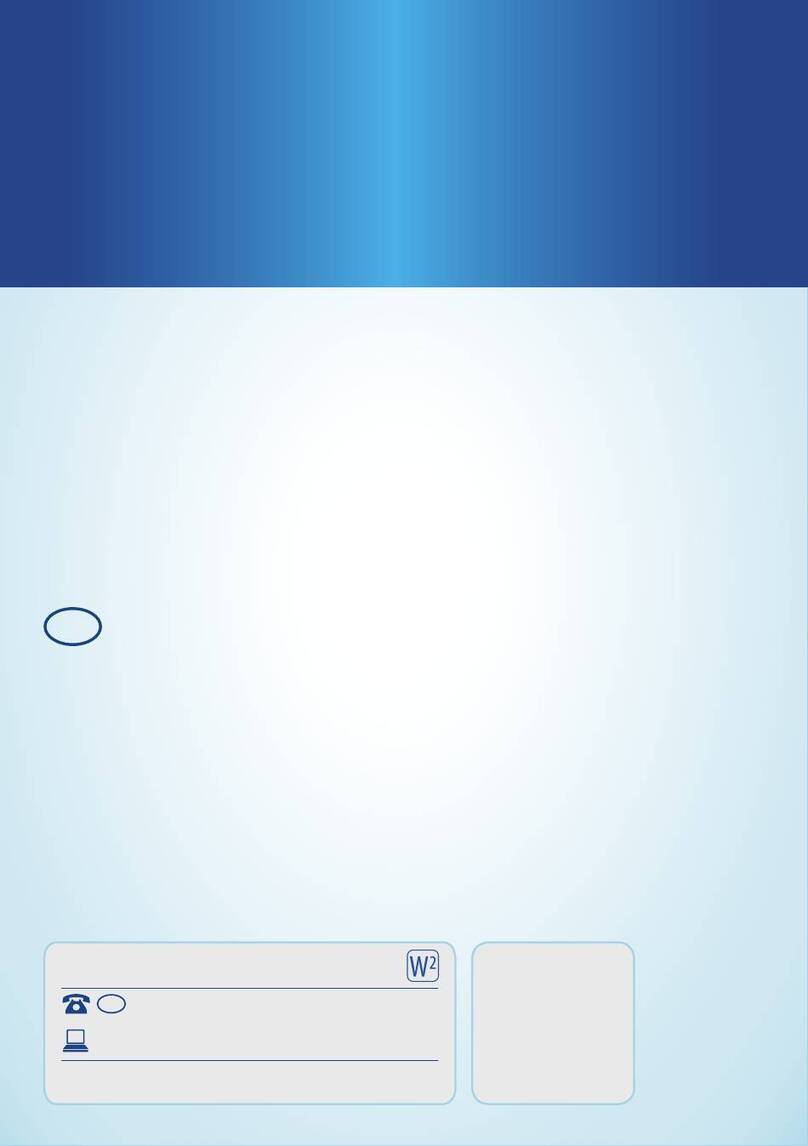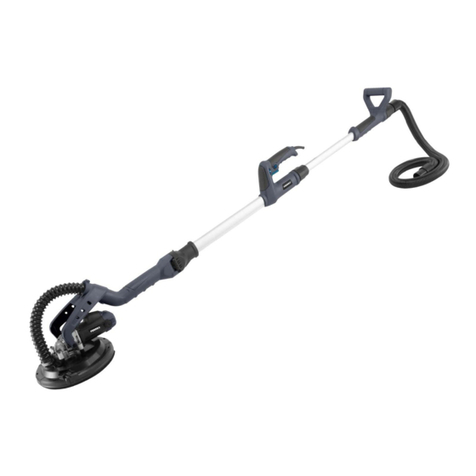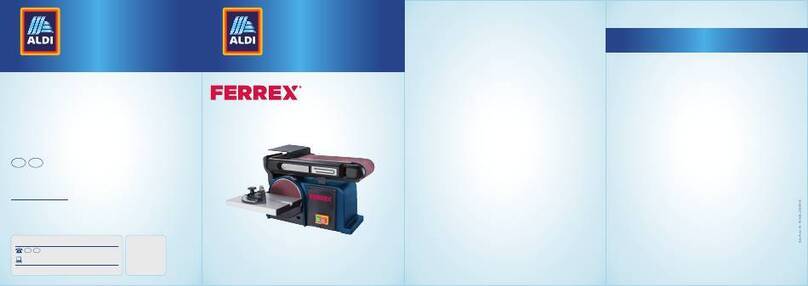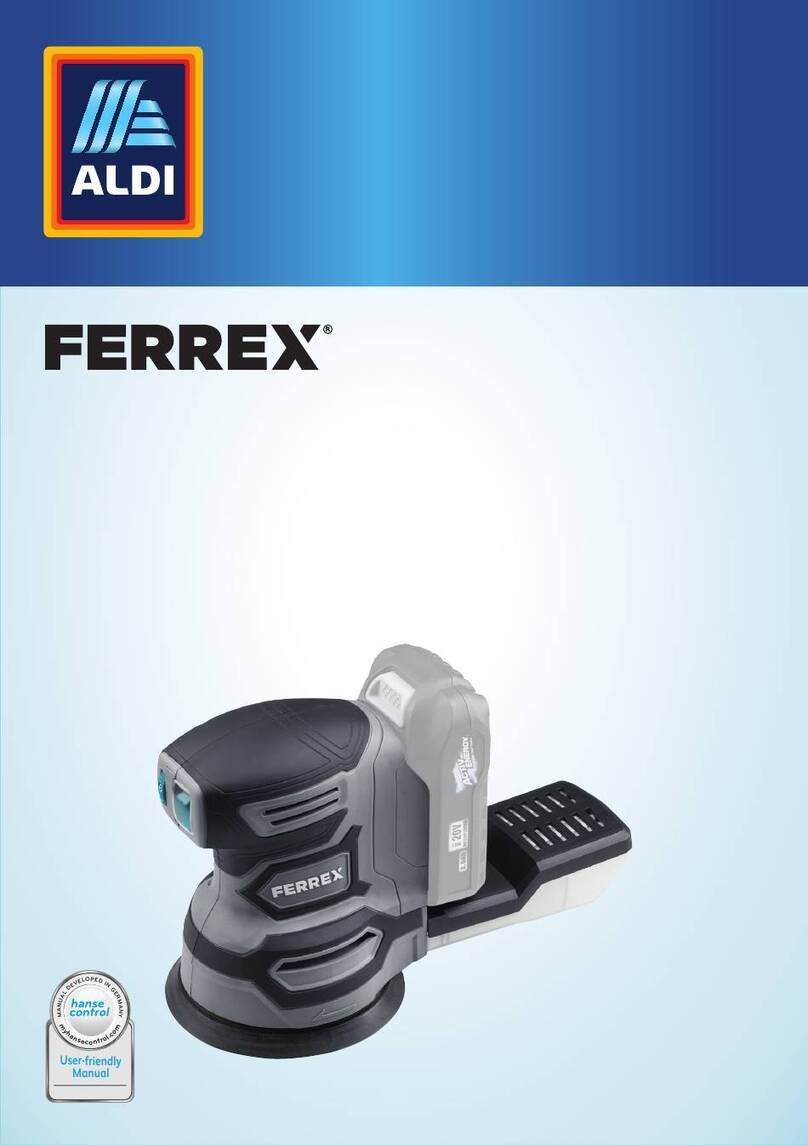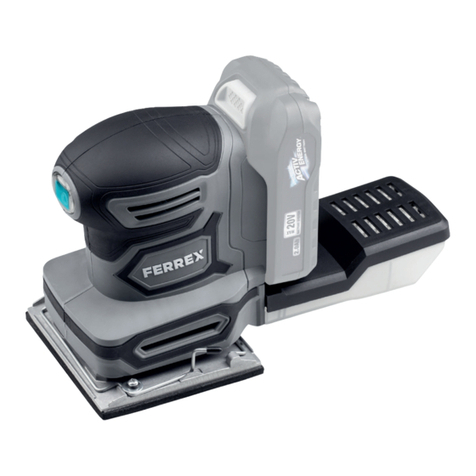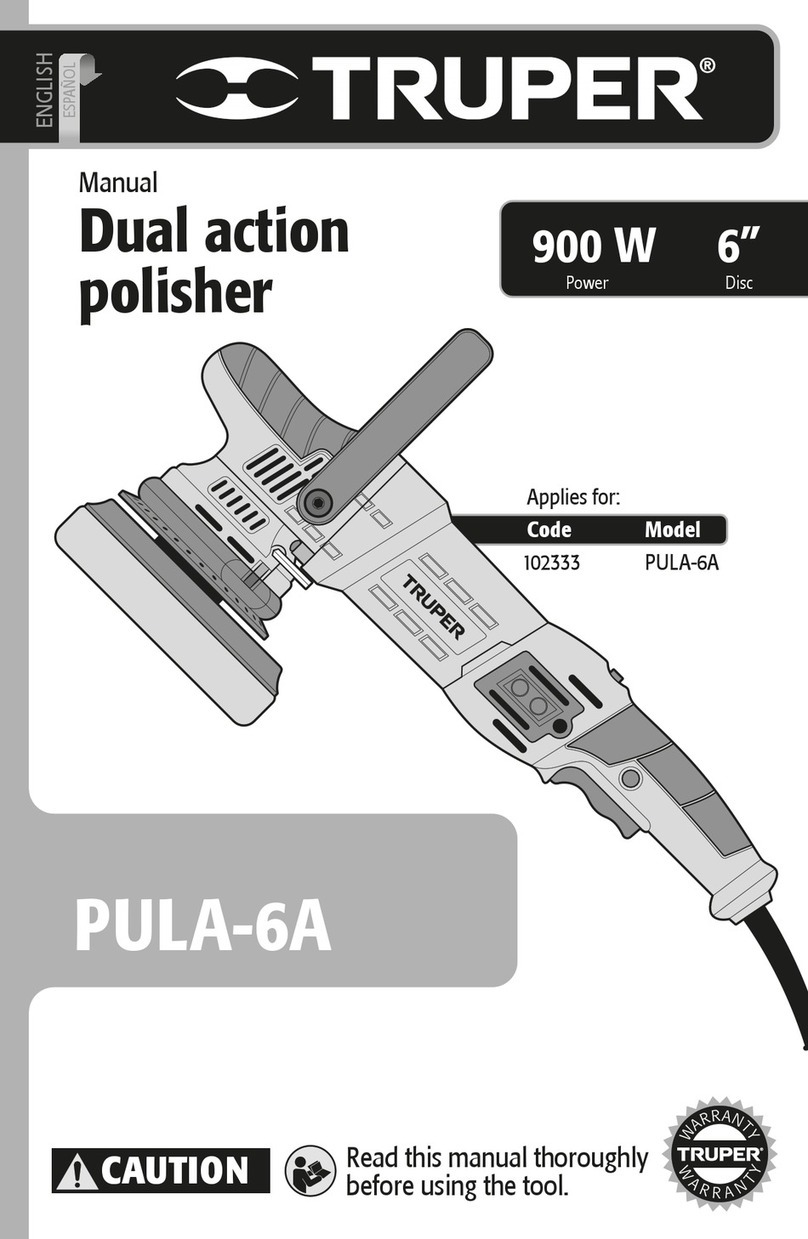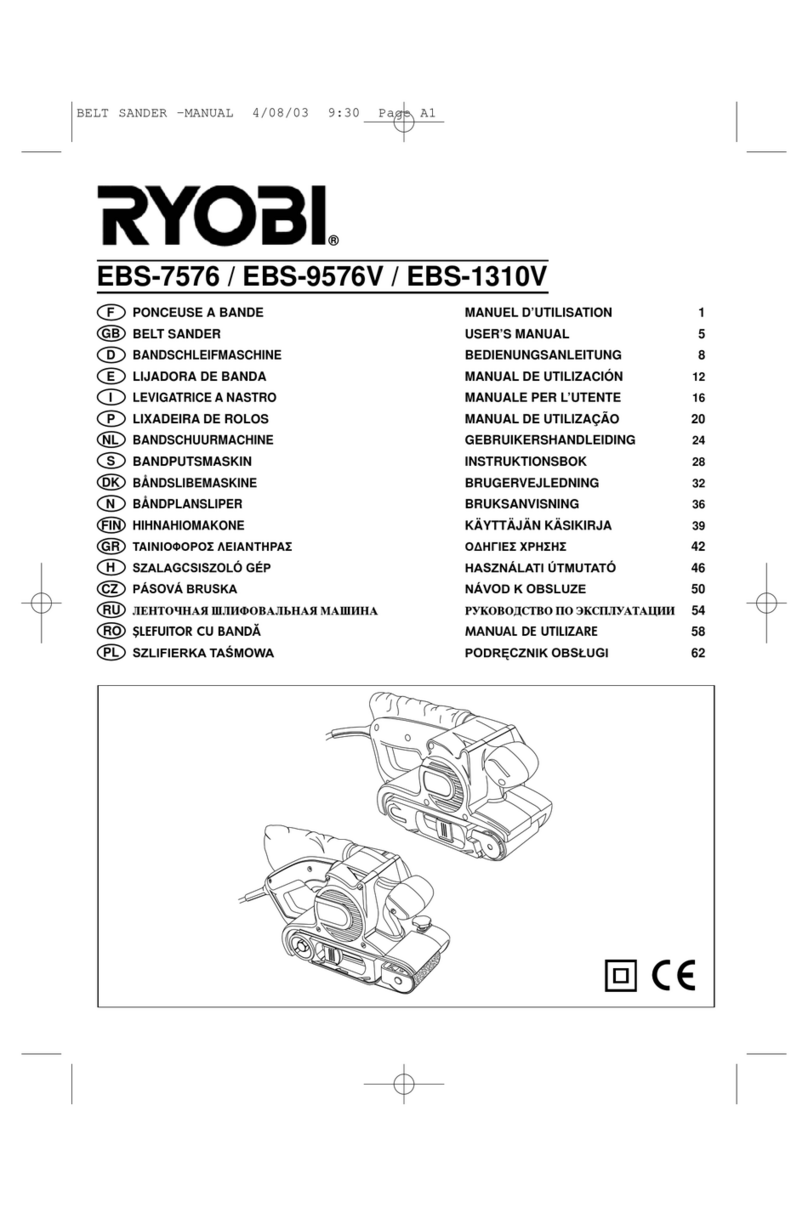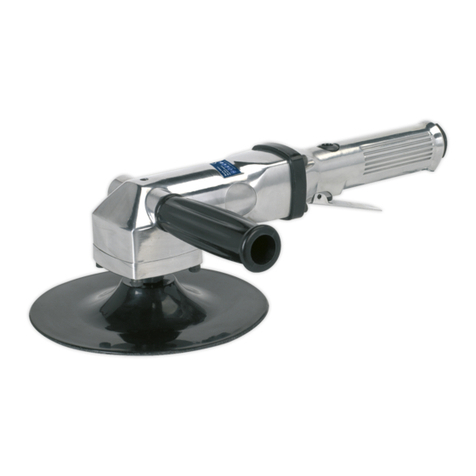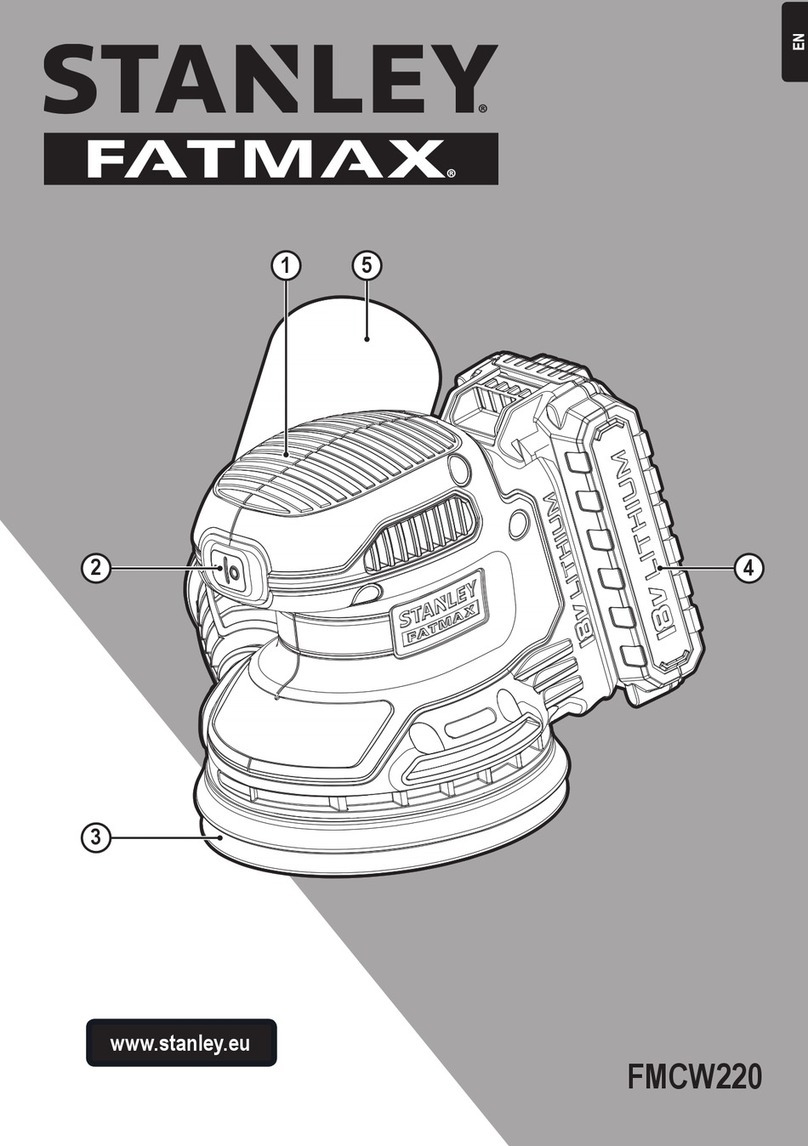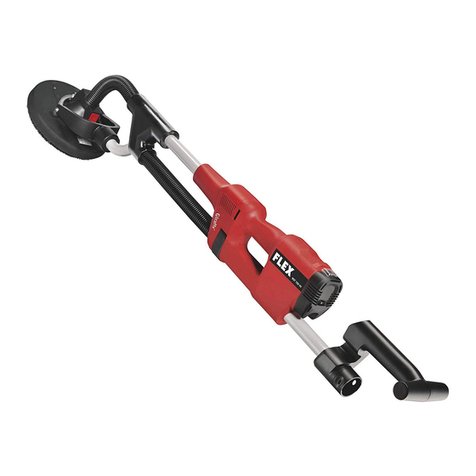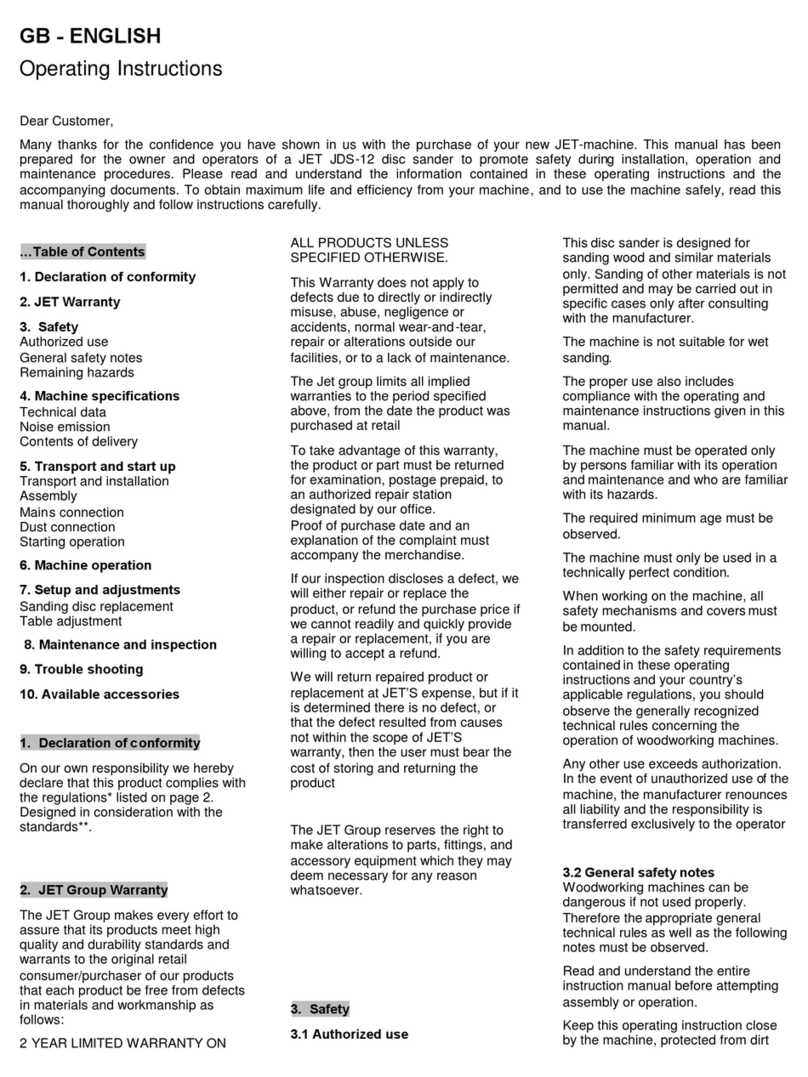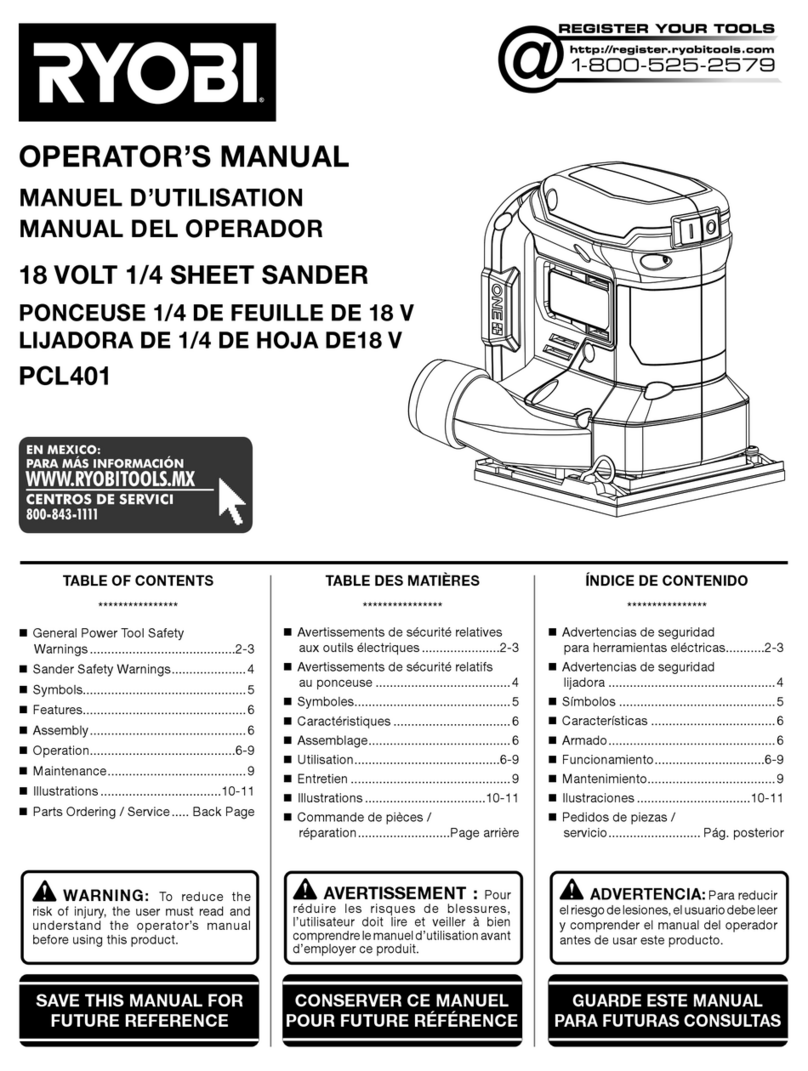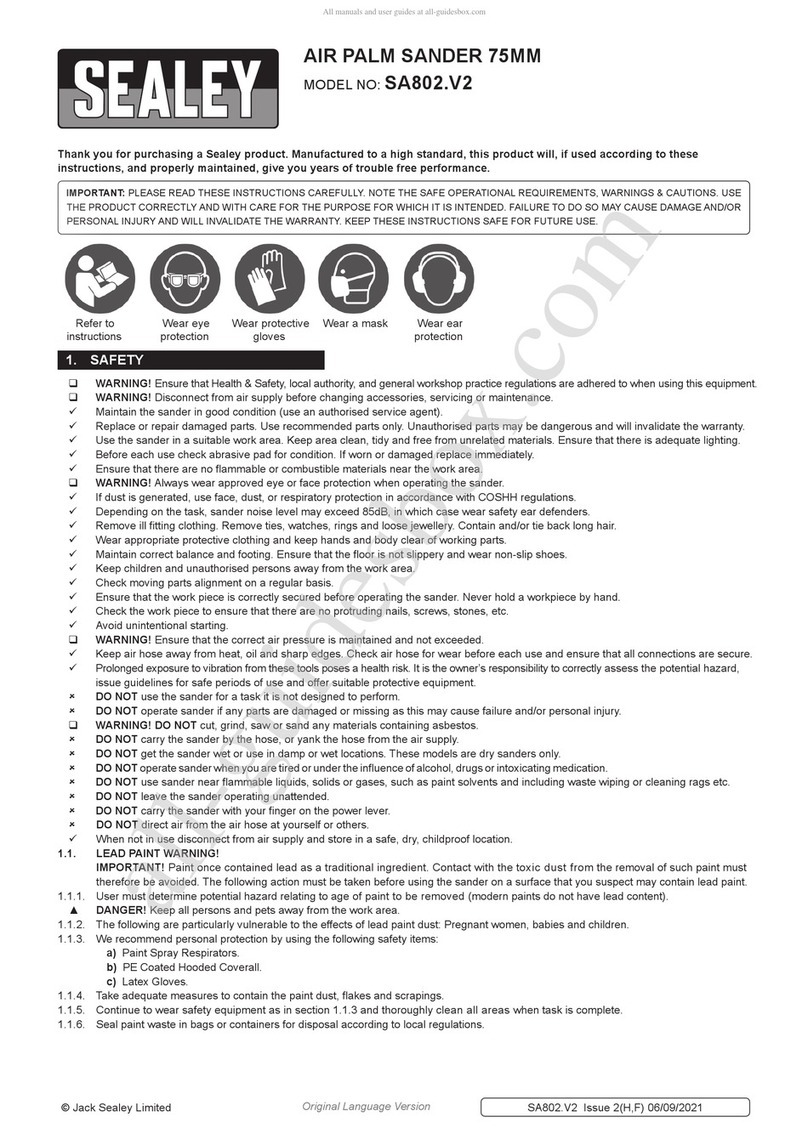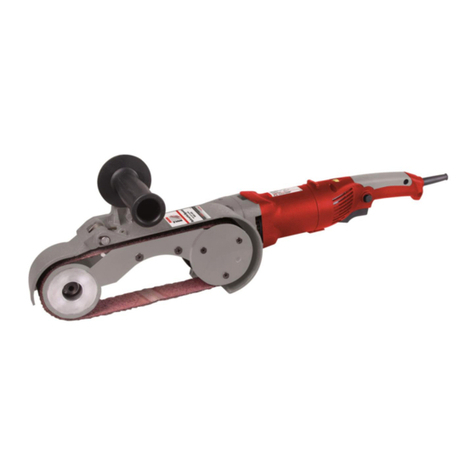FERREX MM4115A User manual

PRODUCED IN CHINA FOR:
GB IE
Great care has gone into the manufacture of this product and it should
therefore provide you with years of good service when used properly. In
the event of product failure within its intended use over the course of the
first 3 years after date of purchase, we will remedy the problem as quickly
as possible once it has been brought to our attention. In the unlikely event
of such an occurrence, or if you require any information about the product,
please contact us via our helpline support services, details of which are to be
found both in this manual and on the product itself.
ALDI STORES LTD. PO BOX 26, ATHERSTONE
WARWICKSHIRE, CV9 2SH
ALDI STORES (IRELAND) LTD.
PO BOX 726, NAAS, CO. KILDARE
Visit us at www.aldi.com
AFTER SALES SUPPORT 805501
GB IE
MODEL:
MM4115A 07/2021
+44(0) 1904727501 +353(0) 19022605
3
YEAR
WARRANTY
User Manual
BELT AND DISC SANDER
Original User Manual

Overview
2
1
2345
67 8 9
10 11 12 13
14 15 16

18 19
22
23
24
25
26
17
27
28
29
A
21 20
Overview
3

Scope of delivery/device components
1
Belt and Disc Sander
2
45° Mitre gauge
3
Worktable rod
4
Rubber foot (x4)
5
Cord wrap (x2)
6
Big flat washer M5 (x12)
7
Screw M5x16 (x4)
8
Base plate
9
Nut M5 (x4)
10
Screw M5x12 (x4)
11
Disc guard
12
Screw M4 x 14
13
Flat washer M4 (x2)
14
Worktable assembly
15
Spanner 10x13 mm
16
Hex key 3, 4, 6 mm (3 pcs)
Operating manual and warranty card
(not depicted)
Device components
17
Sanding disc
18
Work support
19
Sanding belt
20
Carrying-handle
21
Lower belt cover
22
ON /OFF switch
23
Disc Dust outlet
24
Table lock knob
25
Bevel gauge
26
Worktable
27
Belt Dust outlet
28
Belt tension lever
29
Tracking knob
Required tools (not included)
30
Phillips screwdriver
PH1
30
31
Spanner size 8 mm
31
8
Scope of delivery/device components
4

Table of content
Overview..................................................................................................................2
Scope of delivery/device components...................................................................4
General information................................................................................................6
Reading and storing the operating manual..................................................................6
Intended use...................................................................................................................... 6
Explanation of symbols..................................................................................................... 7
Safety.......................................................................................................................8
General safety notes for power tools.............................................................................. 8
Check the device and scope of delivery................................................................14
Assembly instruction............................................................................................. 15
Attaching rubber feet to base plate...............................................................................15
Mounting the base plate................................................................................................. 16
Attaching the cord wrap..................................................................................................16
Attaching the disc guard................................................................................................. 17
Attaching worktable to sanding disc.............................................................................17
Attaching worktable to belt sander...............................................................................18
Before first use...................................................................................................... 20
Operation...............................................................................................................20
Turning the device on and off.........................................................................................21
Chamfering........................................................................................................................21
Mitre sanding....................................................................................................................22
Sanding flat surfaces....................................................................................................... 23
Sanding curved surfaces................................................................................................ 24
Cleaning................................................................................................................. 24
Maintenance.......................................................................................................... 25
Replacing the sanding belt............................................................................................ 25
Adjusting belt tracking....................................................................................................26
Testing....................................................................................................................27
Storage...................................................................................................................27
Transport............................................................................................................... 28
Load securing for transport............................................................................................28
Troubleshooting.................................................................................................... 28
Technical data........................................................................................................29
Noise/vibration information...........................................................................................29
Declaration of conformity......................................................................................31
Disposal..................................................................................................................32
Table of content
5

General information
Reading and storing the operating manual
This operating manual is part of the belt and disc sander (hereinafter also
called "device"). It contains important information on how to set up and
use the device.
Before using the device, read the operating manual carefully, in particular
the safety instructions. Failure to follow this operating manual may lead to severe
injuries or product damage.
This user manual is based on the standards and regulations that are valid within the
European Union. Outside the EU, please also note the country-specific directives and
laws.
Keep this operating manual for future reference. If you pass this device on to a third
party, you must also supply this operating manual.
Intended use
The device is designed for sanding wood of all types, as well as materials that are
similar to wood. It is only suitable for workpieces small enough to fully rest on the
respective worktable. Working on larger workpieces requires additional supports not
included with the device.
The device is suitable for use in non-condensing and non-explosive atmospheres.
This device is intended for private use only and is not suitable for commercial use.
Use the device only as described in this operating manual. Any other use is improper
and may lead to product damage or even personal injury. This device is not a toy.
The manufacturer or retailer assume no liability for damage caused by improper or
incorrect use.
Residual risks
Despite proper use, hidden residual risks cannot be completely excluded.
Depending on the type of device, the following risks may occur:
- Health risks which may result from vibration emissions if the device is used for a
long period of time or is not properly used or maintained.
- Injuries and material damage, which are caused by the moving blade or
breaking tool heads.
- Health risks may result from working with toxic or hazardous materials (eg.
asbestos) or if appropriate personal protection, due to hazardous material use, is
not applied.
General information
6

Explanation of symbols
The following symbols and signal words are used in this user manual, on the device
or on the packaging.
This symbol provides you with useful additional information on
handling and use.
Declaration of conformity (see chapter “Declaration of conformity”):
Products marked with this symbol meet all the applicable Community
regulations of the European Economic Area.
Wear hearing protection.
Wear protective goggles.
Wear a dust mask.
General information
7

Safety
The following signal words are used in this operating manual.
WARNING! This signal symbol/word denotes a
hazard with an average risk level that
could lead to death or severe injury if
it is not avoided.
CAUTION! This signal symbol/word denotes a
hazard with a low risk level that could
lead to mild or moderate injury if it is
not avoided.
NOTE! This signal word provides a warning
about potential material damage.
General safety notes for power tools
WARNING!
Read all safety notes, instructions, illustrations and technical
data provided with this power tool. Failure to follow the
instructions below may result in electric shock, fire and/or
serious injury.
Keep all safety notes and instructions for future reference.
The term "power tool" used in the safety notes refers to both
mains-operated power tools (with power cord) and battery-
powered power tools (without power cord).
Workplace safety
-Keep your work area tidy and well lit.
Clutter or unlit work
areas can lead to accidents.
-Do not operate power tools in explosive atmospheres,
such as in the presence of flammable liquids, gases or
Safety
8

dust.
Power tools create sparks which may ignite the dust or
fumes.
-Keep children and bystanders away while operating a
power tool.
Distractions can cause you to lose control.
Electrical safety
-Power tool plugs must match the outlet. Never modify the
plug in any way. Do not use any adapter plugs with
earthed (grounded) power tools.
Unmodified plugs and
matching outlets will reduce risk of electric shock.
-Avoid body contact with earthed or grounded surfaces,
such as pipes, radiators, ranges and refrigerators.
There is
an increased risk of electric shock if your body is earthed or
grounded.
-Do not expose power tools to rain or wet conditions.
Water
entering a power tool will increase the risk of electric shock.
-Do not misuse the power cord, such as to carry or hang
the power tool or to pull the plug out of the socket. Keep
the power cord away from heat, oil, sharp edges or
moving parts.
Damaged or entangled power cords increase
the risk of electric shock.
-When operating a power tool outdoors, use an extension
cord suitable for outdoor use.
Use of a cord suitable for
outdoor use reduces the risk of electric shock.
-If operating a power tool in a damp location is
unavoidable, use a residual current device (RCD)
protected supply.
Use of an RCD reduces the risk of electric
shock.
Personal safety
-Stay alert, watch what you are doing and use common
sense when operating a power tool. Do not use a power
Safety
9

tool while you are tired or under the influence of drugs,
alcohol or medication.
A moment of inattention while
operating power tools may result in serious personal injury.
-Use personal protective equipment. Always wear eye
protection.
Protective equipment such as a dust mask, non-
skid safety shoes, hard hat or hearing protection used for
appropriate conditions will reduce personal injuries.
-Prevent unintentional starting. Ensure the switch is in the
off-position before connecting to power source and/or
battery pack, picking up or carrying the tool.
Carrying
power tools with your finger on the switch or energising
power tools that have the switch on invites accidents.
-Remove any adjusting key or wrench before turning the
power tool on.
A wrench or a key left attached to a rotating
part of the power tool may result in personal injury.
-Do not overreach. Keep proper footing and balance at all
times.
This enables better control of the power tool in
unexpected situations.
-Dress properly. Do not wear loose clothing or jewellery.
Keep your hair and clothing away from moving parts.
Loose clothes, jewellery or long hair can be caught in moving
parts.
-If devices are provided for the connection of dust
extraction and collection facilities, ensure these are
connected and properly used.
Use of dust collection can
reduce dust-related hazards.
-Do not let familiarity gained from frequent use of tools
allow you to become complacent and ignore tool safety
principles.
A careless action can cause severe injury within a
fraction of a second.
Safety
10

Using and handling the power tool
-Do not overload the power tool. Use the appropriate
power tool for your work.
The right power tool allows you to
work better and safer in the specified power range.
-Do not use any power tool that has a defective switch.
Power tools that can no longer be switched on or off are
dangerous and must be repaired.
-Disconnect the plug from the socket and/or remove any
removable batteries before making adjustments to the
device, changing any insert tool parts, or putting the
power tool away.
This precaution helps prevent
unintentional starting of the power tool.
-Keep power tools out of the reach of children when not in
use. Whoever is not familiar with the power tool or who
has not read these instructions should not be allowed to
use it.
Power tools are dangerous if used by inexperienced
persons.
-Power tools and insert tools must be subject to careful
maintenance. Check whether moving parts function
properly without jamming, and whether parts are broken
or damaged to such an extent that they impair the
functions of the power tool. Have damaged parts repaired
before using the power tool.
Many accidents happen due to
poorly maintained power tools.
-Keep cutting tools sharp and clean.
Carefully maintained
cutting tools with sharp blades tend to jam less and are easier
to guide.
-Use power tools, insert tools, insert tool parts, etc.
according to these instructions. While doing so, take into
account the working conditions and the activity to be
Safety
11

performed.
The use of power tools for applications other
than those intended can lead to dangerous situations.
-Keep handles and grip surfaces dry, clean and free of oil
and grease.
Slippery handles and grip surfaces hinder safe
operation and control of the power tool in unforeseen
situations.
Service
-Have your power tool serviced by a qualified repair
person using only identical replacement parts.
This will
ensure that the safety of the power tool is maintained.
-If the device’s mains power cable is damaged, it must be
replaced by the manufacturer or their customer service or a
similarly qualified person, to avoid any hazard.
- If the supply cord is damaged, it must be replaced by the
manufacturer, its service agent or similarly qualified persons
in order to avoid a hazard.
Additional safety notes for stationary sanding machines
-Wear a suitable dust mask and use an extraction device in
enclosed spaces. Wood dust (from oak, beech etc.) is harmful
to health. The machine must not be used to sand materials
containing asbestos.
-Observers must keep well clear of the workspace.
-Make sure that the floor around the machine is level,
clean and free of loose particles such as chips and cutting
scrap.
-Make sure that the sanding machine cannot be switched
on by children.
-Never use the sanding machine for any purpose other
than its intended purpose. For instance, the sanding
machine must never be used for wet sanding.
Safety
12

-Make sure that the sanding machine is stably positioned
on firm ground. Do this by mounting the sanding machine
firmly on a suitable work surface.
-Check all screws regularly to make sure they are tight.
-Avoid uncomfortable working positions. Ensure secure
footing and keep your balance at all times. This will give you
greater control over the sanding machine in unexpected
situations.
-Please be aware that the sanding disc and the sanding
belt are both always running when the sanding machine
is in operation. Make sure that, for instance, you do not
injure yourself on the moving sanding disc while using the
sanding belt.
-Noise levels: the use of hearing protection is
recommended when operating motor-powered
machinery.
-To prevent suddenly being caught up in the sanding disc
or sanding belt:
• Do not wear gloves.
• Take off any jewellery or loose items of clothing.
• If you have long hair, wear a hairnet.
• If you are wearing long sleeves, roll them up past your
elbows.
-Wear gloves when replacing the sanding disc or sanding
belt, or when handling rough materials.
-In order to prevent accidents caused by unintentional
starting of the sanding machine, always pull the mains
plug out of the socket while the sanding machine is not in
use, before carrying out adjustment and maintenance, and
when changing accessories, e.g. sanding discs.
Safety
13

-Never leave the sanding machine unattended. Always
switch off the device and only leave it once the tool has
completely come to a standstill.
• Please be aware that the sanding disc and sanding belt
will continue to run for a short while when the device is
switched off.
-In order to prevent electric shocks when inserting the
plug in the socket, do not touch the metal contacts of the
plug.
-Do not use the cable to pull the plug out of the socket.
Protect the cable from heat, oil and sharp edges.
-Only use accessories that are listed in the operating
manual.
-Avoid awkward hand positions that could cause one or
both hands to come into contact with the sanding disc or
sanding belt if you slip suddenly.
-If the sanding disc or sanding belt get stuck, or if the
device is jammed with the material being sanded, switch
off the sanding machine immediately, unplug the mains
plug and remove the blockage. Before switching the device
back on, check the sanding disc and sanding belt to ensure
that they can turn freely and are free of damage. Replace the
sanding disc or sanding belt if they are damaged.
Check the device and scope of delivery
WARNING!
Danger of suffocation!
Children may become tangled up in the packaging film when
playing with it and suffocate.
- Do not let children play with the packaging film.
Safety
14

NOTE!
Risk of damage!
If opening the packaging with a sharp knife or other pointed
objects, careless handling can damage the device.
- Therefore, be very careful when opening.
1. With both hands, lift the device out of the packaging.
2. Check that the delivery is complete (see chapter “Scope of delivery/device
components”).
3. Inspect the device and individual parts for damage. Do not operate a damaged
device; instead, contact the manufacturer via the service center listed on the
warranty card.
Assembly instruction
Attaching rubber feet to base plate
1
7
4
6 8
31
8
31
16
-Screw the rubber feet
4
to the base plate
8
as shown in the illustration.
Use the 4 mm hex key
16
supplied and an 8 mm spanner.
Check the device and scope of delivery
15

Mounting the base plate
2
86
10
- Screw the base plate
4
to the belt and disc sander
1
as shown in the
illustration.
Use the 4 mm hex key
16
supplied.
Attaching the cord wrap
3
30
5
1. Unscrew the two screws with flat washers anticlockwise at the positions shown.
2. Screw on the two cord wraps
5
using the two screws and flat washers as
shown in the illustration.
Assembly instruction
16

Attaching the disc guard
4
30
0°5°10°
15°
20°
25°
30°
35°
40°
45°
11
13
12
- Firmly screw on the disc guard
11
as shown in the illustration.
Attaching worktable to sanding disc
5
3
1. Use the 13 mm spanner
15
to loosen the hexagon screw slightly by turning it
anticlockwise.
2. Guide the worktable rod
3
into the opening until it reaches the limit stop as
shown in the illustration.
Assembly instruction
17

6
0°
5°
10°
15°
20°
25°
30°
35°
3. Tighten the hexagon screw on the device by turning it clockwise.
4. Align the worktable
26
so that it is no more than 1.6 mm away from the sanding
disc
17
and tighten the hexagon screw as shown in the illustration.
7
14
30
5. You can fine-tune the spacing between the worktable and the sanding disc by
loosening the two screws on the underside of the worktable as shown in the
illustration.
6. Gently move the worktable forwards or backwards until the spacing is correct.
7. Tighten both screws by turning them clockwise.
Attaching worktable to belt sander
The worktable
26
can be attached to the belt sander in order to enable
vertical working. First, the work support
18
must first be removed.
Assembly instruction
18

818
30
27
1. Unscrew the hexagon screw and the flat washer on the work support using the
10 mm spanner
15
.
2. Unscrew both of the screws on the belt dust outlet
27
.
3. Remove the work support.
9
4. Use the 6 mm hex key
16
to loosen the fixing screw as shown in the illustration.
5. Lift up the belt sander, as shown in the illustration, and bring it into the vertical
position.
6. Tighten the fixing screw by turning it clockwise.
Assembly instruction
19

10
0°5°10°
15°
20°
25°
30°
35°
40°
45°
14
3
7. Use the 13 mm spanner
15
to loosen the hexagon screw slightly by turning it
anticlockwise.
8. Guide the worktable rod
3
into the opening until it reaches the limit stop as
shown in the illustration.
9. Align the worktable (see section "Attaching worktable to sanding disc") and
tighten the screws.
Before first use
Operation
CAUTION!
Risk of injury!
A damaged device or damaged accessories can lead to injuries.
- Check the device and the accessories (see section "Testing").
CAUTION!
Risk of injury!
The tool bit heats up during operation.
- Do not touch the tool bit until it has cooled down again.
Assembly instruction
20
This manual suits for next models
1
Table of contents
Other FERREX Sander manuals
Popular Sander manuals by other brands
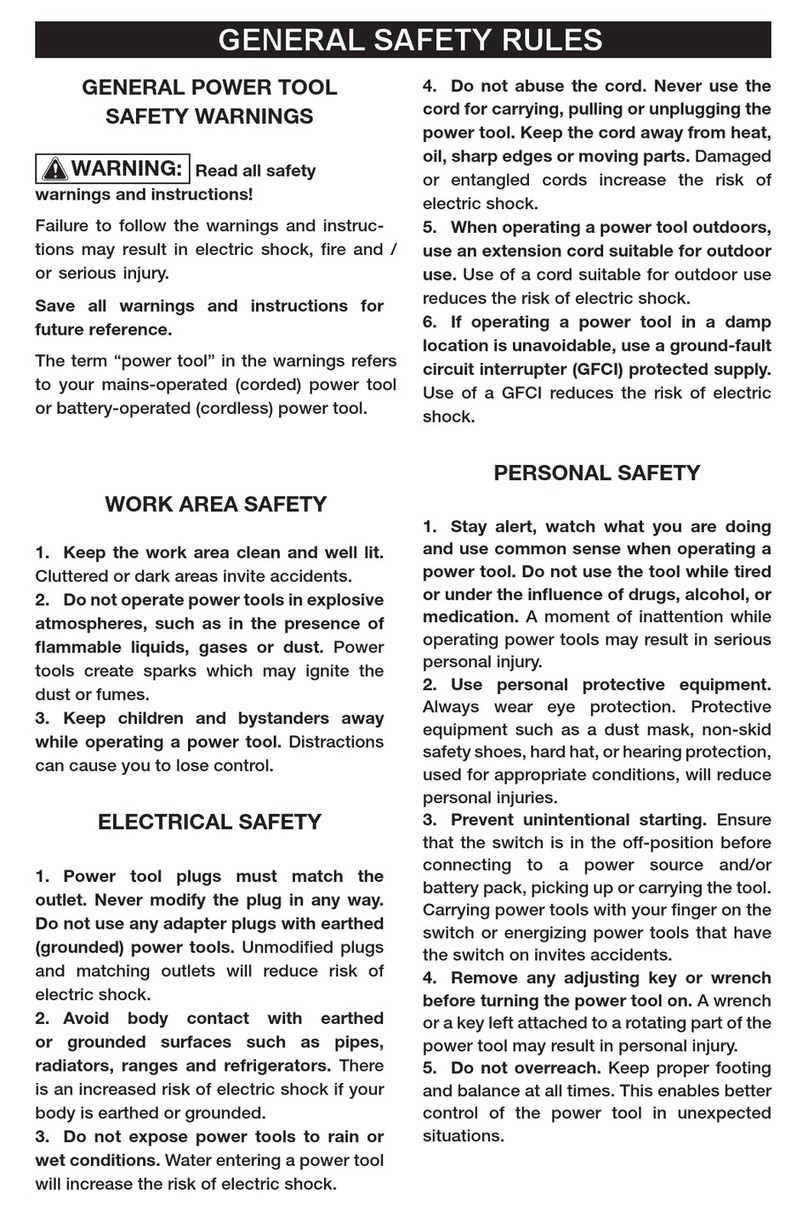
Mighty Seven
Mighty Seven DOS-501 manual
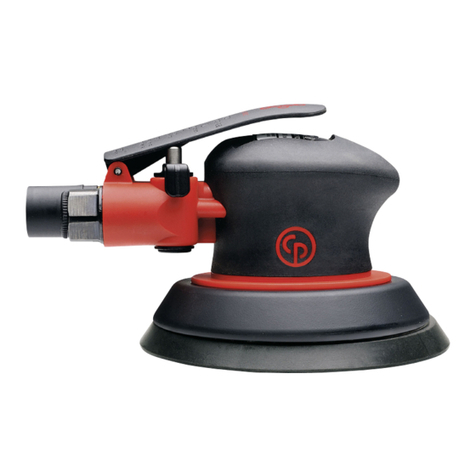
Chicago Pneumatic
Chicago Pneumatic CP35 Series Operator's manual

Alpha tools
Alpha tools BT 450 operating instructions
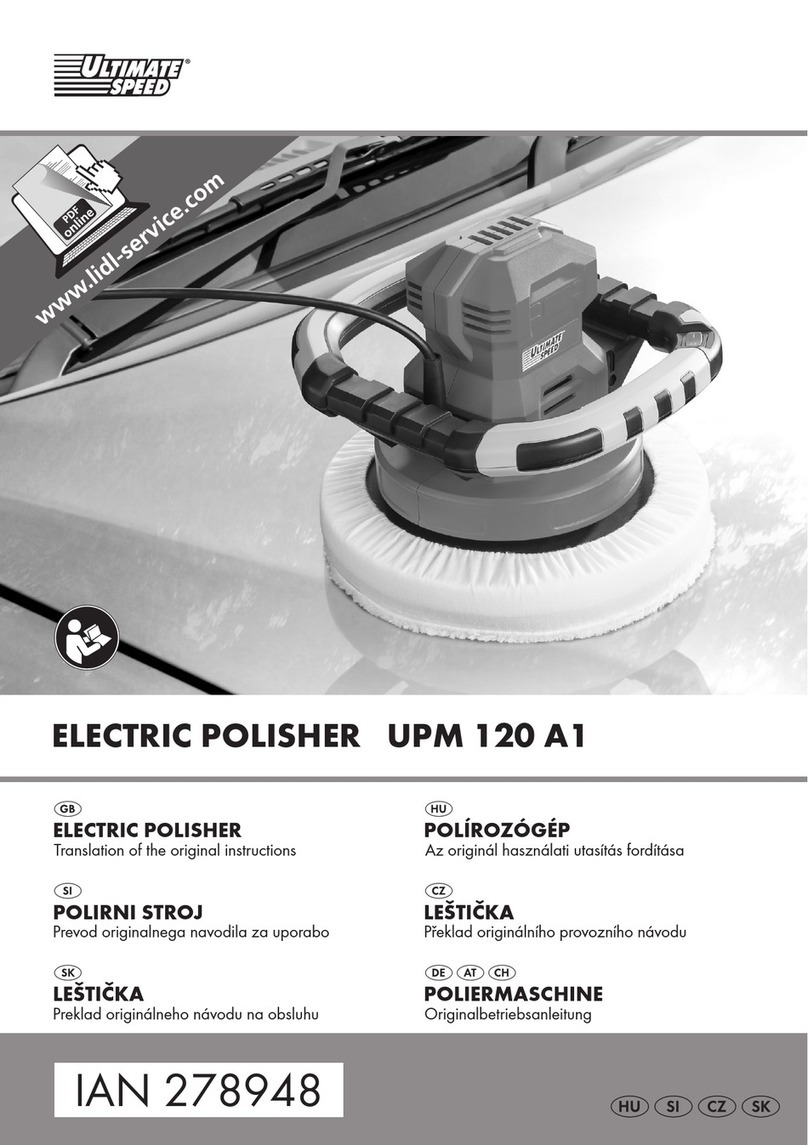
ULTIMATE SPEED
ULTIMATE SPEED UPM 120 A1 Translation of the original instructions

VERTO
VERTO 51G750 instruction manual
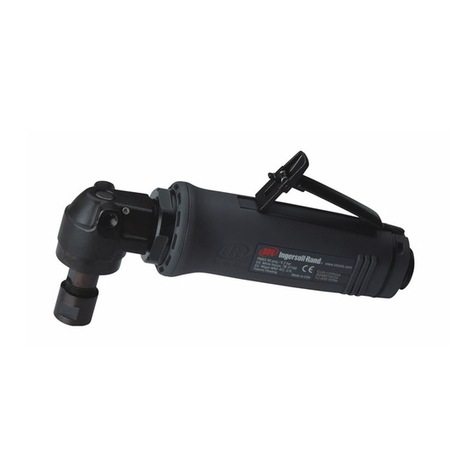
Ingersoll-Rand
Ingersoll-Rand G3 Series Product information
